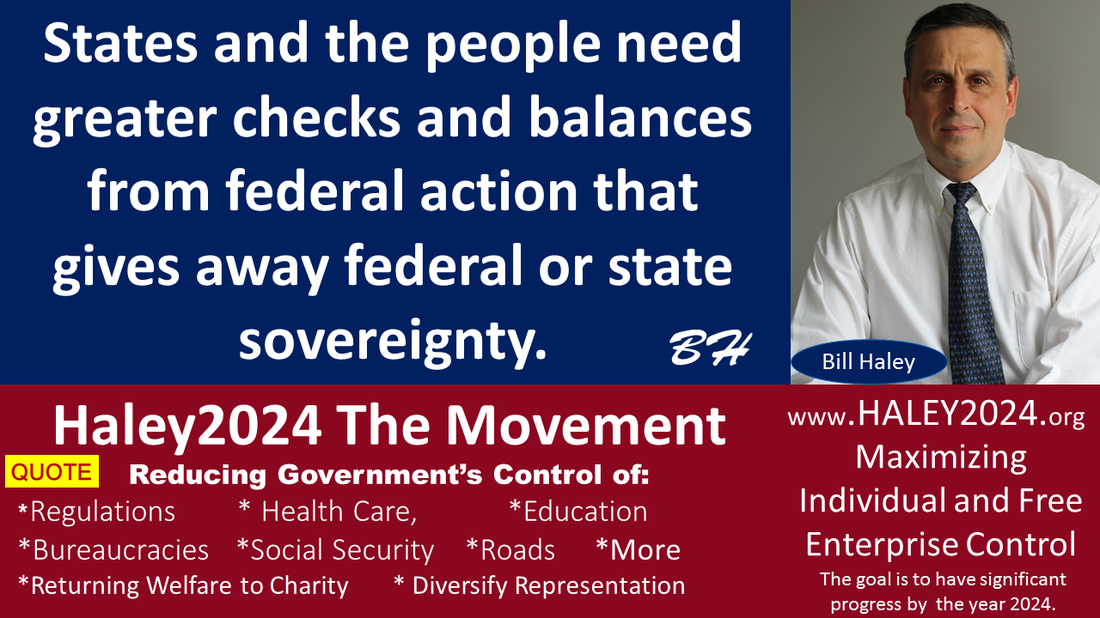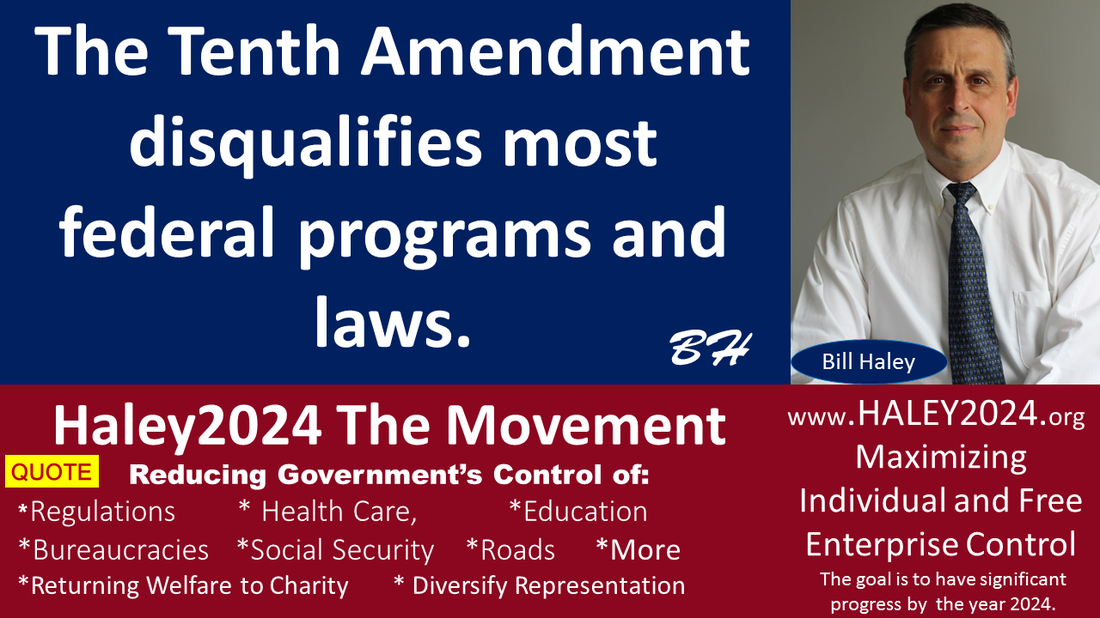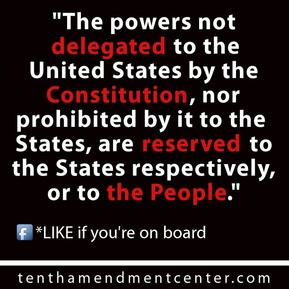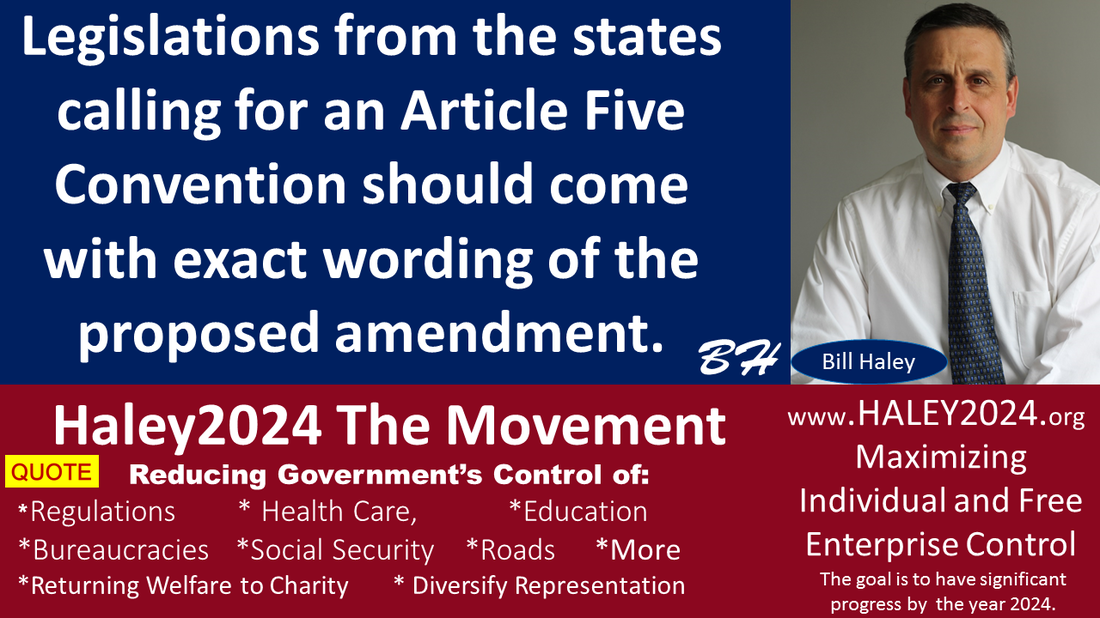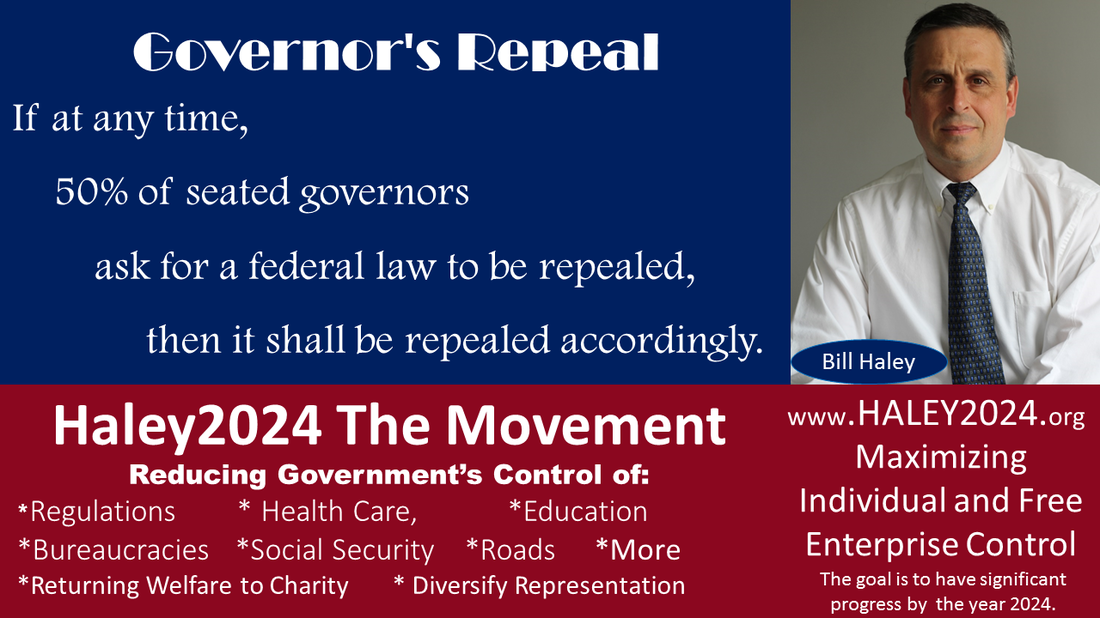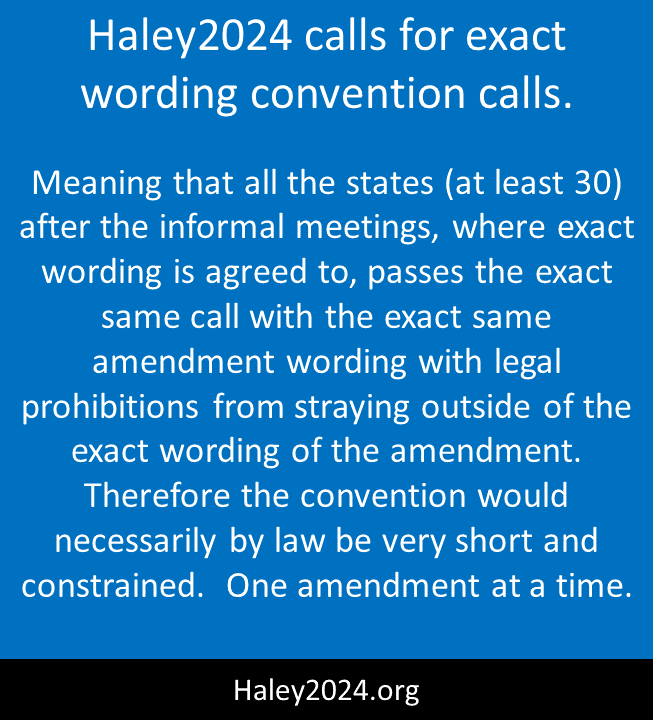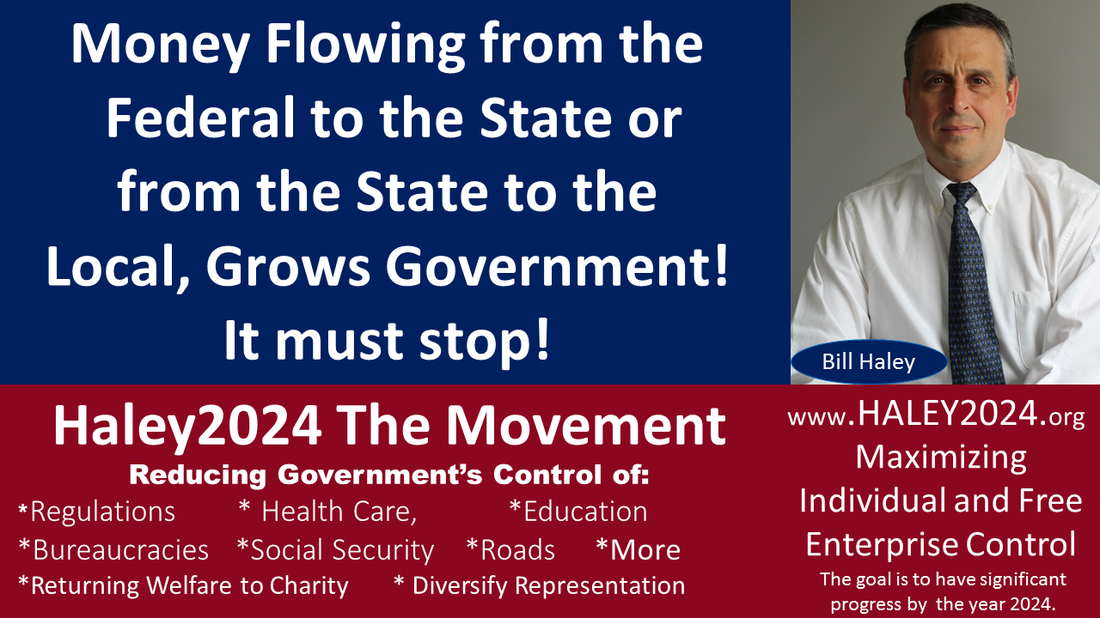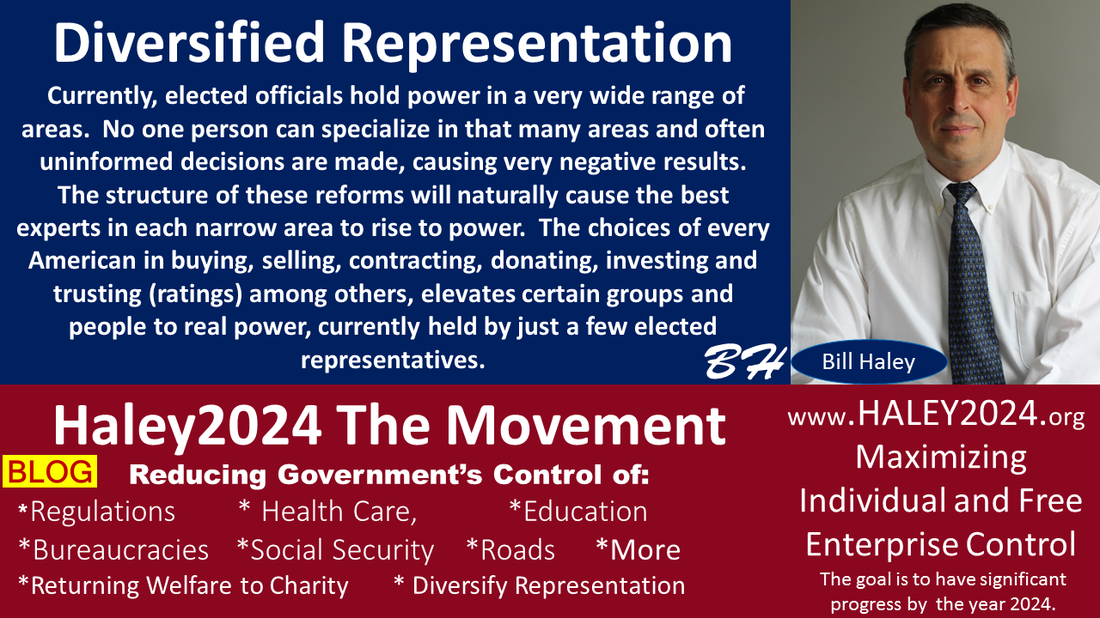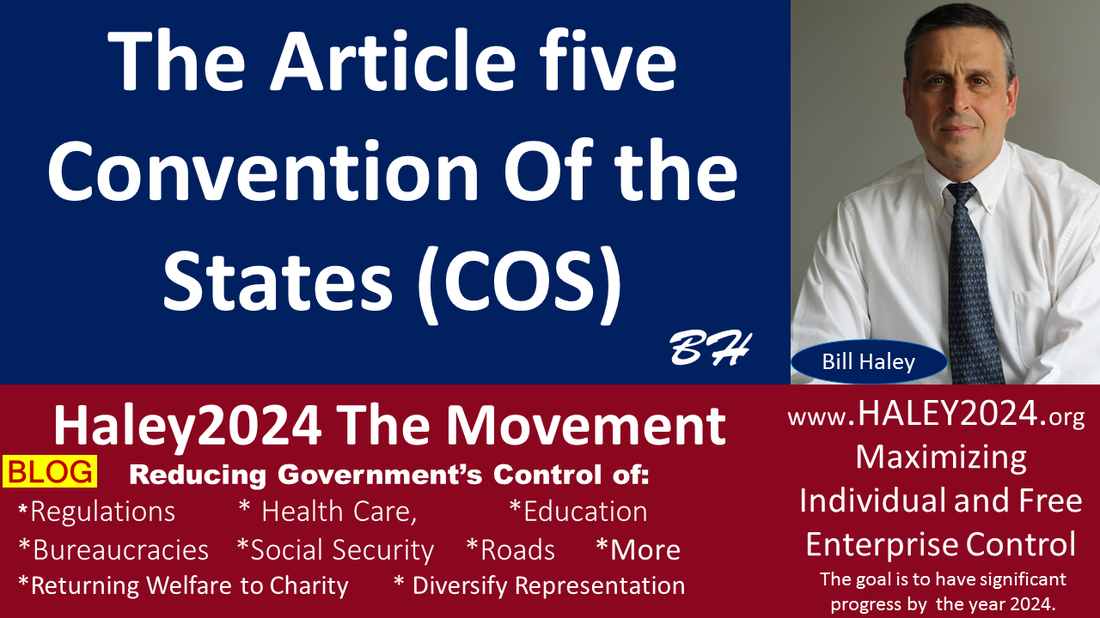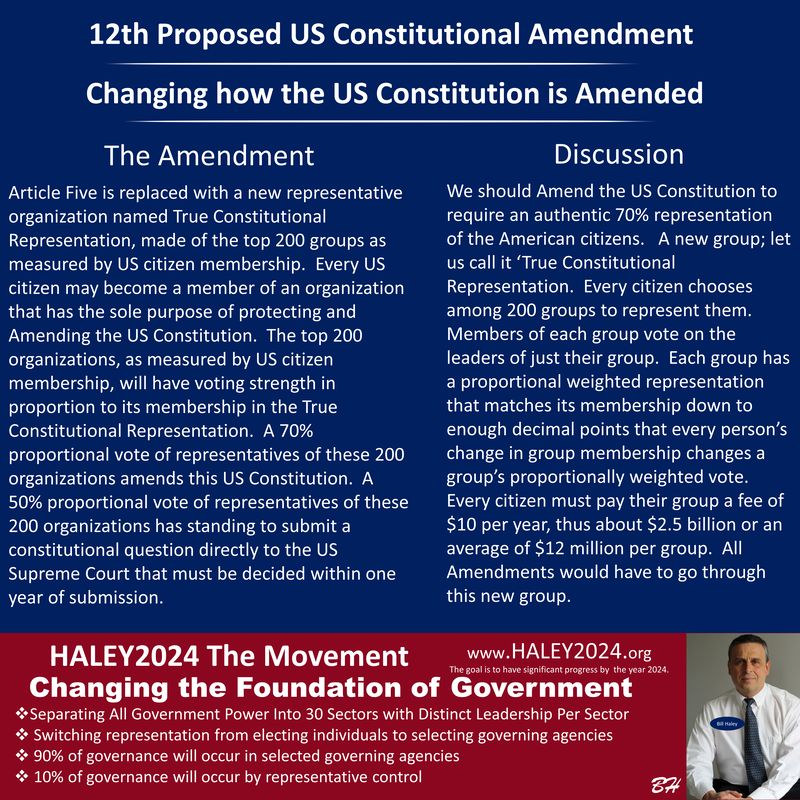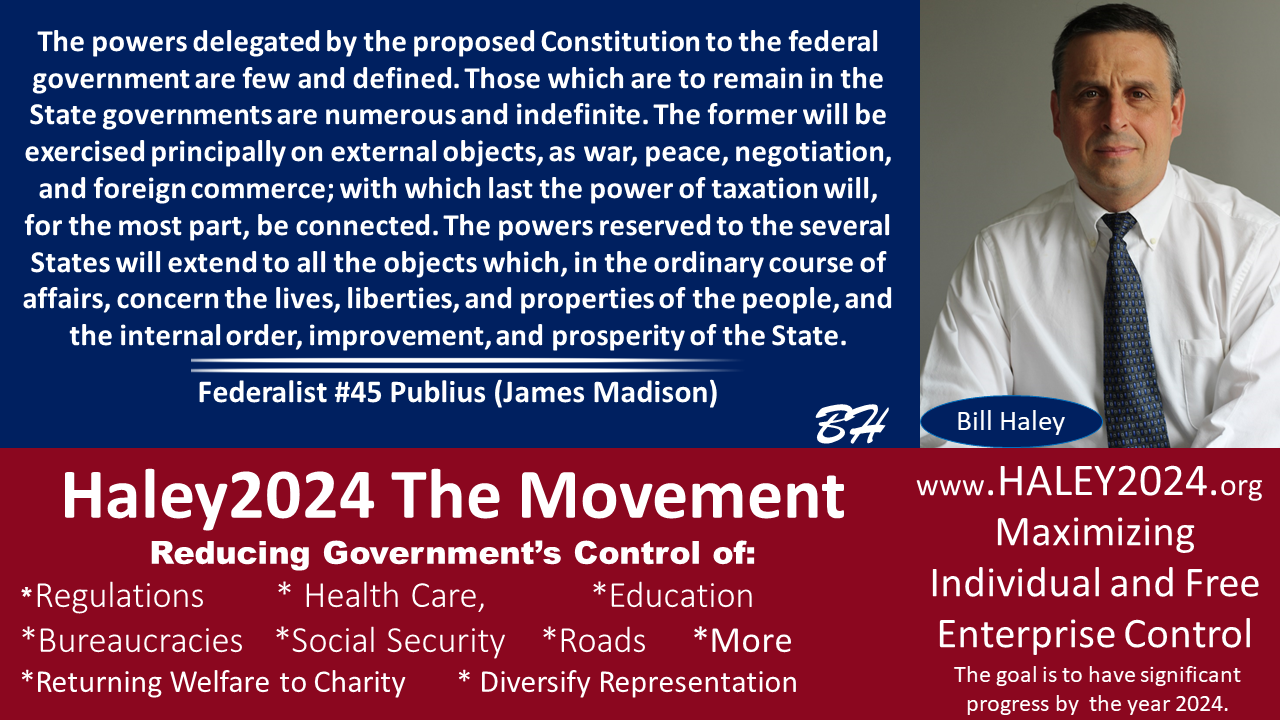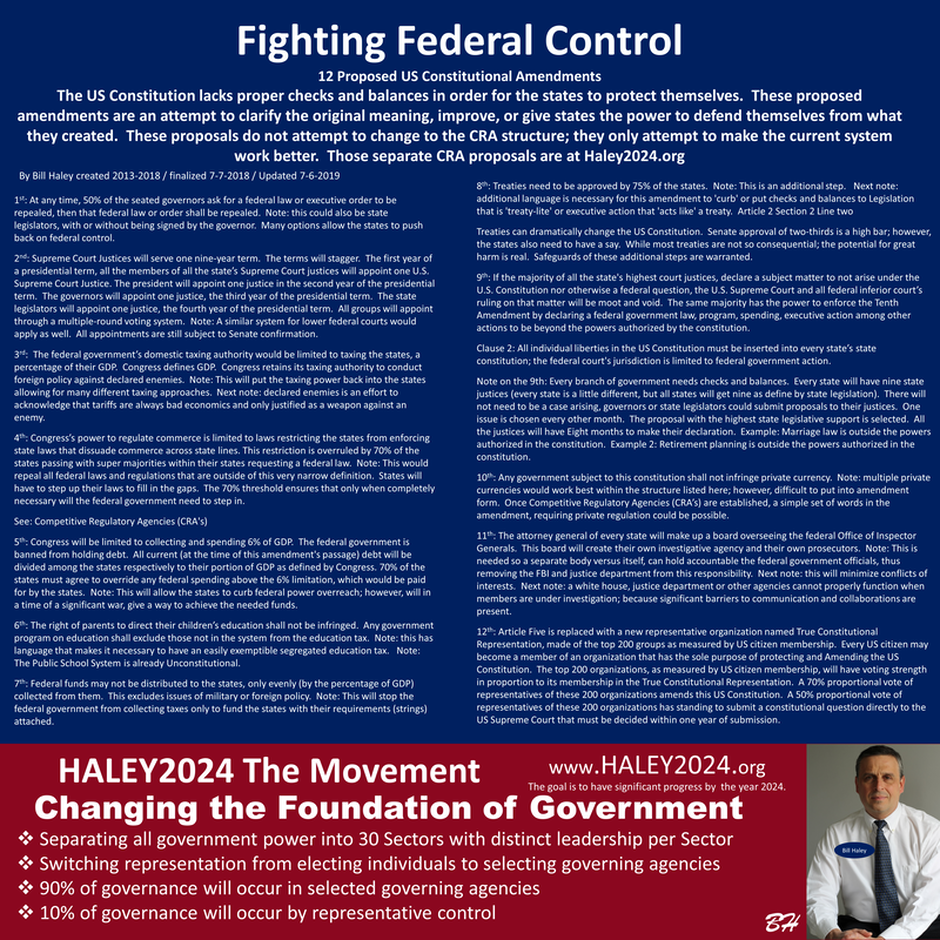Fighting Federal Control
12 Proposed US Constitutional Amendments
|
Haley2024 agrees with three levels of government (federal, state, and local); however, they should pick their responsibilities. There should be distinct differences with no overlap and no money flowing from one to another. Haley2024 The Movement calls for most of the current functions of the government to transition to the individual through free enterprise.
|
|
Haley2024 The Movement calls for the federal government to only handle the military and foreign affairs. All other issues should be handled by the states or the individuals in the free enterprise system. All debt and promises from the federal government to the people will need to be taken care of by each state for their citizens. This page is strictly about fighting and limiting federal control. Once the states have all this control, Haley2024 the Movement advocated reforms will be easier.
|
|
All regulations at the federal level will be repealed, and the federal role in regulations going forward would be to restrict protectionist policies by the states. This would return this nation back to the original understanding of the commerce clause. (See document from Randy Burnett HERE. State banking, insurance, and education among other laws currently have significant protectionist policies that should be federally regulated out of existence.
|
|
The Tenth Amendment is the perfect amendment to pass to rein in the federal government. The language is excellent; however, it does not protect itself. Trying to elect people to enforce that amendment just is not working. States need the power to enforce the 10th. Yes, the 17th Amendment harmed the states from enforcing the Tenth Amendment and should be repealed. Haley2024 calls for a ‘Governors Repeal’ and adjusting who appoints federal judges/ justices.
|
|
1st: At any time, 50% of the seated governors ask for a federal law or executive order to be repealed, then that federal law or order shall be repealed. Note: this could also be state legislators, with or without being signed by the governor. Many options allow the states to push back on federal control.
|
|
2nd: Supreme Court Justices will serve one nine-year term. The terms will stagger. The first year of a presidential term, all the members of all the state’s Supreme Court justices will appoint one U.S. Supreme Court Justice. The president will appoint one justice in the second year of the presidential term. The governors will appoint one justice, the third year of the presidential term. The state legislators will appoint one justice, the fourth year of the presidential term. All groups will appoint through a multiple-round voting system. Note: A similar system for lower federal courts would apply as well. All appointments are still subject to Senate confirmation.
|
|
3rd: The federal government’s domestic taxing authority would be limited to taxing the states, a percentage of their GDP. Congress defines GDP. Congress retains its taxing authority to conduct foreign policy against declared enemies. Note: This will put the taxing power back into the states allowing for many different taxing approaches. Next note: declared enemies is an effort to acknowledge that tariffs are always bad economics and only justified as a weapon against an enemy.
|
|
4th: Congress’s power to regulate commerce is limited to laws restricting the states from enforcing state laws that dissuade commerce across state lines. This restriction is overruled by 70% of the states passing with super majorities within their states requesting a federal law. Note: This would repeal all federal laws and regulations that are outside of this very narrow definition. States will have to step up their laws to fill in the gaps. The 70% threshold ensures that only when completely necessary will the federal government need to step in.
See: Competitive Regulatory Agencies (CRA's) |
|
5th: Congress will be limited to collecting and spending 6% of GDP. The federal government is banned from holding debt. All current (at the time of this amendment's passage) debt will be divided among the states respectively to their portion of GDP as defined by Congress. 70% of the states must agree to override any federal spending above the 6% limitation, which would be paid for by the states. Note: This will allow the states to curb federal power overreach; however, will in a time of a significant war, give a way to achieve the needed funds.
|
|
6th: The right of parents to direct their children’s education shall not be infringed. Any government program on education shall exclude those not in the system from the education tax. Note: this has language that makes it necessary to have an easily exemptible segregated education tax. Note: The Public School System is already Unconstitutional
Haley2024 the Movement, fully endorses the parental rights Amendments |
|
7th: Federal funds may not be distributed to the states, only evenly (by the percentage of GDP) collected from them. This excludes issues of military or foreign policy. Note: This will stop the federal government from collecting taxes only to fund the states with their requirements (strings) attached.
|
|
8th: Treaties need to be approved by 75% of the states. Note: This is an additional step. Next note: additional language is necessary for this amendment to 'curb' or put checks and balances to Legislation that is 'treaty-lite' or executive action that 'acts like' a treaty. Article 2 Section 2 Line two Treaties can dramatically change the US Constitution. Senate approval of two-thirds is a high bar; however, the states also need to have a say. While most treaties are not so consequential; the potential for great harm is real. Safeguards of these additional steps are warranted.
|
|
9th, If the majority of all the state's highest court justices, declare a subject matter to not arise under the U.S. Constitution nor otherwise a federal question, the U.S. Supreme Court and all federal inferior court’s ruling on that matter will be moot and void. The same majority has the power to enforce the Tenth Amendment by declaring a federal government law, program, spending, executive action among other actions to be beyond the powers authorized by the constitution.
|
|
Note on the 9th: Every branch of government needs checks and balances. Every state will have nine state justices (every state is a little different, but all states will get nine as define by state legislation). There will not need to be a case arising, governors or state legislators could submit proposals to their justices. One issue is chosen every other month. The proposal with the highest state legislative support is selected. All the justices will have Eight months to make their declaration. Example: Marriage law is outside the powers authorized in the constitution. Example 2: Retirement planning is outside the powers authorized in the constitution.
|
|
10th: Any government subject to this constitution shall not infringe private currency. Note: multiple private currencies would work best within the structure listed here; however, difficult to put into amendment form. Once Competitive Regulatory Agencies (CRA’s) are established, a simple set of words in the amendment, requiring private regulation could be possible.
|
|
11th: The attorney general of every state will make up a board overseeing the federal Office of Inspector Generals. This board will create their own investigative agency and their own prosecutors. Note: This is needed so a separate body versus itself, can hold accountable the federal government officials, thus removing the FBI and justice department from this responsibility. Next note: this will minimize conflicts of interests. Next note: a white house, justice department or other agencies cannot properly function when members are under investigation; because significant barriers to communication and collaborations are present.
|
|
12th Proposed US Constitutional Amendment
Article Five is replaced with a new representative organization named True Constitutional Representation, made of the top 200 groups as measured by US citizen membership. Every US citizen may become a member of an organization that has the sole purpose of protecting and Amending the US Constitution. The top 200 organizations, as measured by US citizen membership, will have voting strength in proportion to its membership in the True Constitutional Representation. A 70% proportional vote of representatives of these 200 organizations amends this US Constitution. A 50% proportional vote of representatives of these 200 organizations has standing to submit a constitutional question directly to the US Supreme Court that must be decided within one year of submission. |




